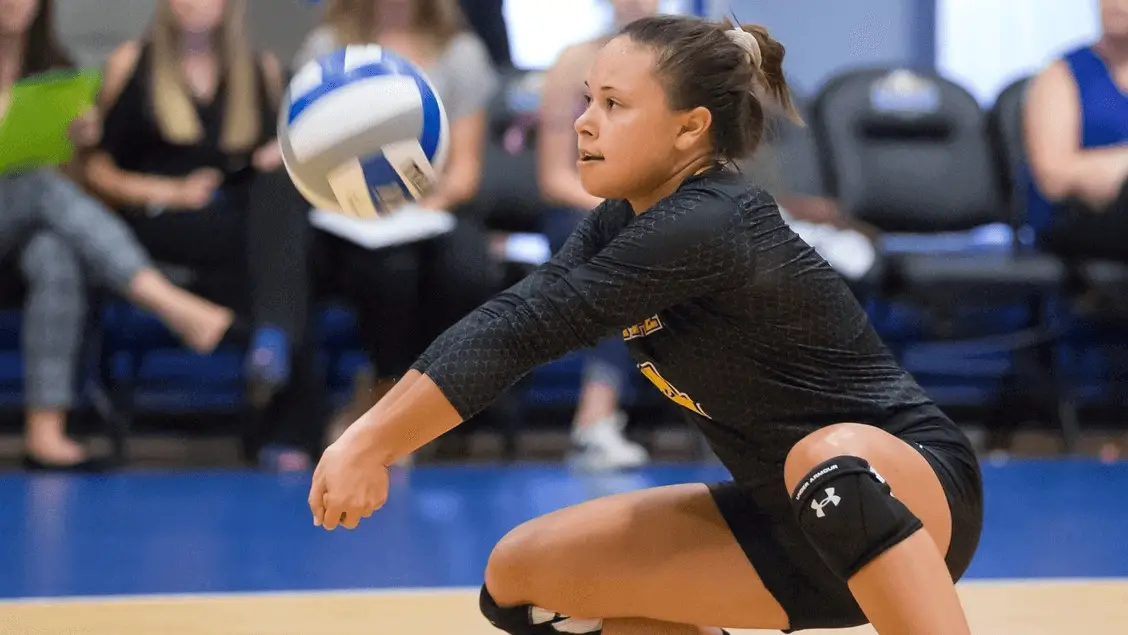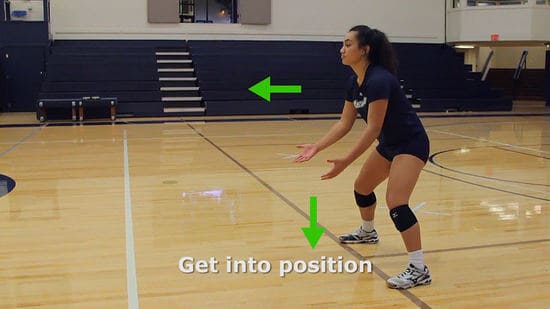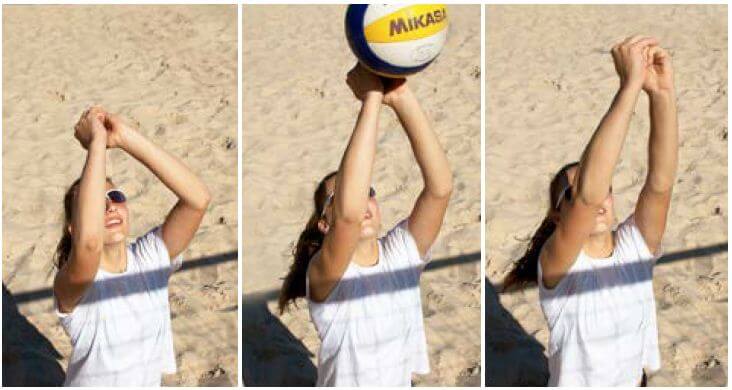So you want to know how to dig a volleyball well in this article I am hoping to take you through a step by step guide on how to dig a volleyball and also my top tips on how to be a more consistent passer for both the beach and indoor.
So lets start with the basics
Table of Contents
How to Dig a Volleyball for Beginners
So it is important to note that if you are a complete beginner this is going to be a lot to think about, so what I would suggest is you bookmark this article and make sure every time you play you focus on 1 or 2 things at a time. Make sure you fully understand each step and why and how it is important, one thing that helped me a lot when first starting with volleyball was not what I was doing wrong but why it was wrong. If you can understand why each step or action will improve your game it will be much easier to remember and put into practice.
So let’s get into this.
The first thing we will cover is what you need to do with your arms and hands to form your passing platform.
Arms and hands for passing platform
To dig the volleyball you want to have both arms together, straight and facing the angle of your target.
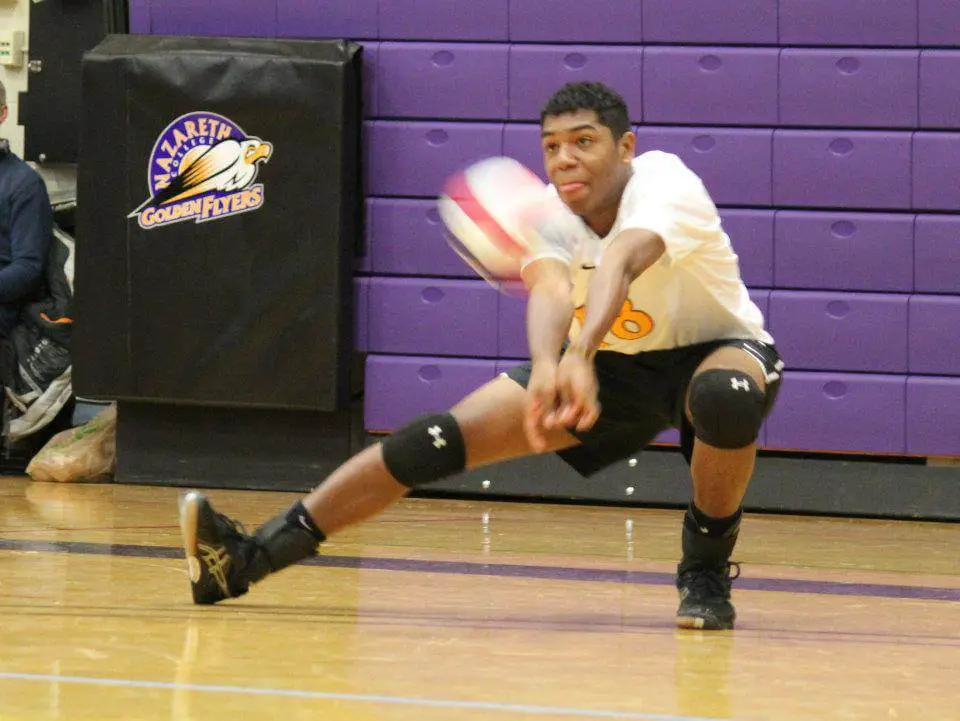
To form you platform you first want to put both your arms out flat with the palms of your hands facing the sky. Refer to the below image

Once you have arms straight with your palms facing upwards next place one hand on top of the other like so.
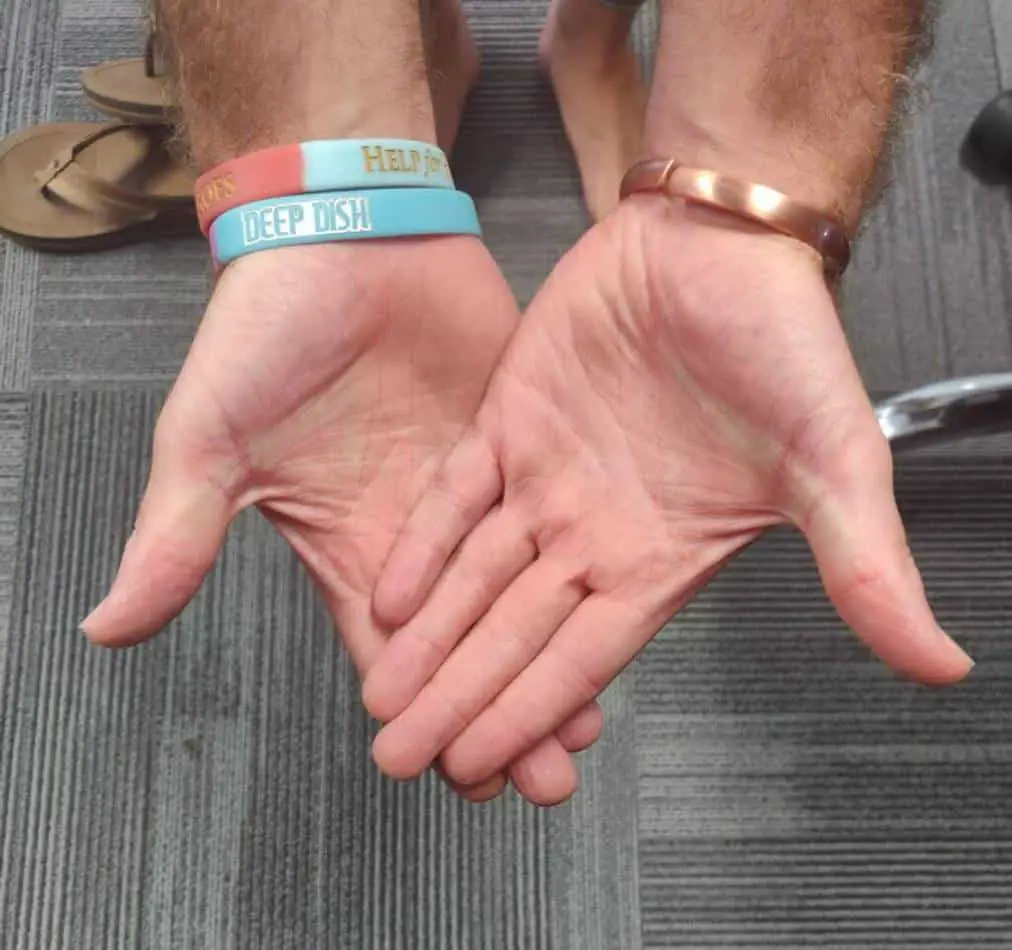
Once your hands are as above take both of your thumbs and place them at the top of the triangle shape.
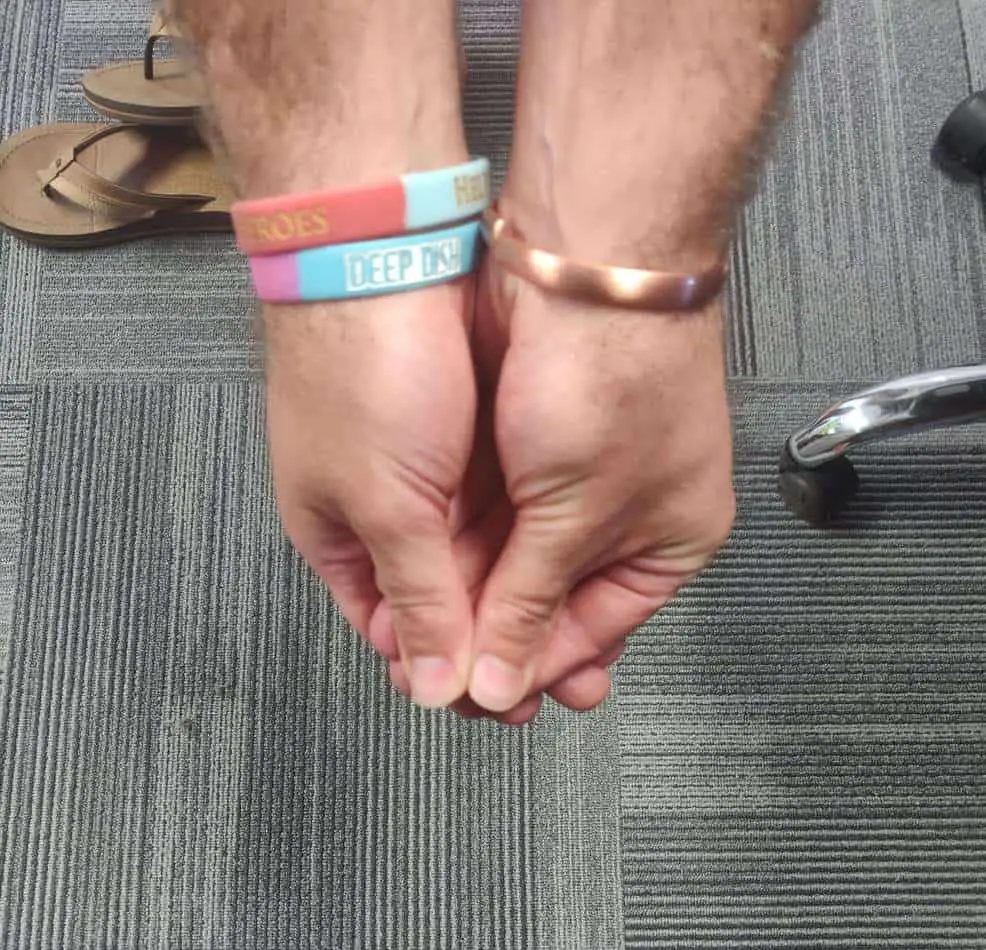
Once you have your hands in the right position push your wrists up and straighten your arms to form a nice equal platform.
Now it is worth noting that the above steps aren’t necessary however with the above it does teach you the importance of having a flat equal platform, as I said before, one of the most important things to remember when learning how to perform volleyball skills is not necessarily how to perform the skill but why it’s important to perform it in that way.
So why is it so important to have a flat stable platform?
Well the main reason for having a stable even platform is to ensure when the ball contacts your platform it comes back off at the angle you intend it to rather then deflecting off at an angle. To explain this in simple terms if you were to bounce a ball of a flat concrete slab it would bounce off at the exact angle it contacted the ground where as if you were to bounce a ball of a bumpy surface it would deflect off at a different angle every time. The next reason you want to have a nice stable even platform is you want to create the largest surface area available to perform the pass.
The next step to passing a volleyball is to ensure you have a stable stance, to perform this you want to have your feet a little over shoulder width apart with your knees bent (your knees should be in-line or over your toes when you look directly down) it is also important to ensure that you are not leaning back on your heels and you are in fact on your toes so you can react to wherever the ball is spiked. See below for desired platform.
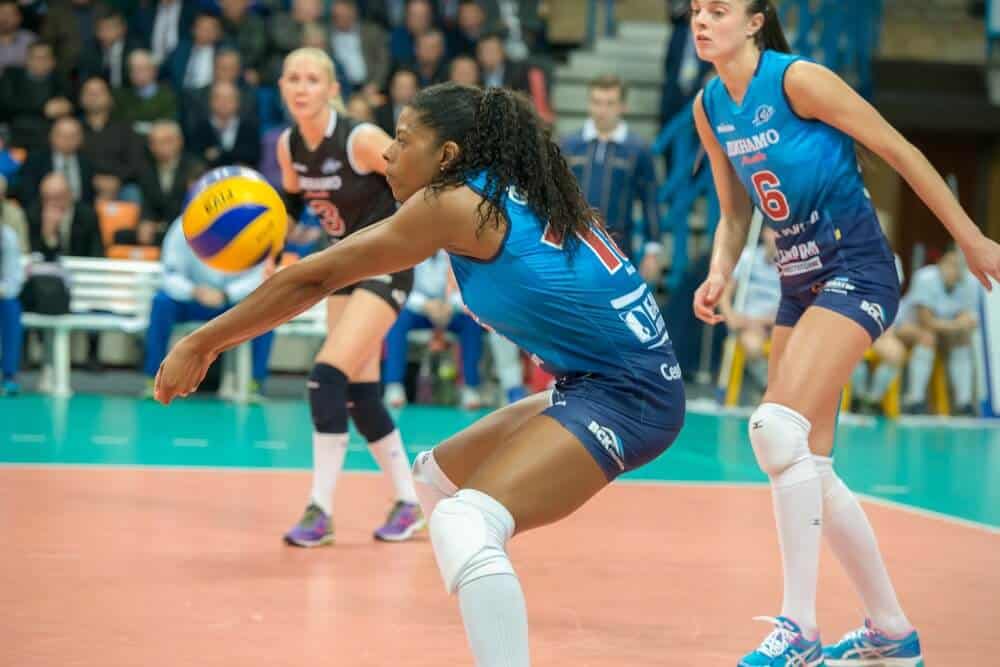
The reason it is important to perform the above stance is its important to note that when passing you actually want to use your body weight and momentum to pass the ball and not swing your arms. When the ball approaches your platform you want to push your bodyweight upwards into the trajectory of the ball and in the direction that you want the ball to travel.
Other key Tips To Digging a Volleyball
Make sure you are not moving still when you perform the pass.
One last very important step that I seriously can’t stress enough is to ensure when you pass you have a nice gap between your platform and armpits as indicated below.
This will ensure you have the control and flexibility to manoeuvre your body and get your shoulders in line with the ball.
Now you know the key things to produce a nice passing platform lets go over how you move into the flight path of the ball to ensure.
Moving to pass the volleyball
As already stated when passing a volleyball you want to always try to have your body behind the ball with your shoulders facing your target.
As your opponents will be trying to win the point they will obviously aim to hit the ball where you are not currently standing so this means you must move quickly and efficiently to get your body back behind the ball.
It is very important that you move around the volleyball court in the correct way otherwise this can lead to the following problems, not getting to the ball in time, being off balance when you pass, your pass does not go where you wanted it to?
So how do we maneuver around the court the correct way?
Well we want to utilise the shuffle step or side step as brilliantly demonstrated by the below tennis player (Pro tip we can learn a lot from tennis players movements 😉

When using the shuffle or side step in volleyball it is important that our eyes remain at the same level throughout our movement and during our pass, what I mean by this is it is much quicker to stay at the level needed to perform the pass and then pass the ball properly with good form instantly than it is to stand up run to the required position, get back down into the correct passing form and then execute the pass. So remember to make sure when you shuffle step you do not let your body stand up, be on your toes and move across the court at the same level.
A common mistake I see a lot of beginners make when they first start is allowing their legs to cross over as this instantly makes the passers off balance and unable to use the body weight and momentum to pass the ball as opposed to swinging their arms wildly.

Another thing to note when passing the ball is if you are required to play a pass in which your body is at an angle to the net it is important to stagger your feet and put your body weight through your leg outside leg (The leg that is closest to the outer line of the court on the side in which you are playing)

The reason we do this is to help prevent a few errors occuring. The first reason we do this is to ensure when we pass our shoulders are facing our target and we aren’t going to overpass the ball either straight over the net to your opponents or straight out of bounds. The next issue we are hoping to prevent is that when we move towards the net to pass the ball we want to ensure the momentum from moving to the passing location doesn’t continue causing us to fall into or towards the net or be off balance when passing the ball.
How to Dig a Volleyball as an intermediate and be a Better Passer
So you have the basics down and think that you are moving on to that next level and you want to know how you take your passing game up another level.
Well I would like to refer you to the above as really the technique never changes however there are some small variations that will help you dig more balls and pass with a better degree of accuracy.
Preparation to dig a volleyball
If you have moved past the beginner stage chances are you are playing with better opponents, this may mean that they attack or serve the ball from a higher contact point and also hit the ball a lot harder, this means we must be ready to receive the ball and make a quick decision on how to best receive the ball.
The above steps are to teach the fundamentals and basics on how to pass as a beginner and hopefully teach the importance of a good platform and low centre of gravity however if we adopt the position detailed above and the attacker hits the ball very fast slightly of centre from where we position we may not have time to react and get our arms in the correct format this is why we must adopt a slightly different stance.
When playing against stronger opponents we want to stand the same as above in terms of bent knees with feet just over shoulder width apart in a nice low active position however want our arms slightly spread so we can put our platform together at a moments notice in the required position. If we already have our platform loaded out and the opponent hits the ball to our left or right we often won’t have time to move our feet as such we must move our arms to meet the ball, with this being said we don’t want to swing our arms to the target as this is slow and will lead to inaccurate passes.
Instead we want to put either our left or right arm (Whichever one is closest to the ball) out in the path of the hit and then bring just one arm (the arm that is the opposite side to where the ball has been hit) to meet the other arm and form our platform.
This allows us to have a chance of digging (or picking up) the ball even if we don’t have time to properly form our platform.
It is important to note that even in this situation we still want to try and push our shoulders round the ball to ensure we create a nice passing angle back into either the setter or the centre of the court.
How to receive the ball above chest height
So sometimes the ball is just hit too high to be able to dig using the techniques mentioned above so I know some of you will be asking ‘what do I do if the ball is head height?’ well that really depends on whether you are playing beach volleyball or indoor volleyball as the different rules of each game make certain receiving touches illegal.
Receiving a high ball in indoor volleyball
I will start with Indoor volleyball as the rules are much clearer and generally there is a lot more leniency. If this ball is coming towards you above chest height either from a high loopy ball over or a hard hit you are allowed to receive the ball using the overhead setting motion (Click here for the full article on setting) or alternatively however you feel comfortable playing the ball, you can use one hand, two hands together.
The way in which most players are taught is where possible (and if you feel confident doing so) always try and overhead hand set as generally this will be your most accurate pass however like I said it comes down to a matter of confidence and what feels most comfortable to you.
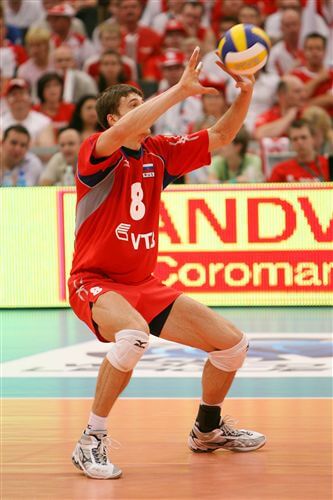
The important thing is if they opposition are hitting the ball with a lot of power to make sure you protect your head and face and get the ball up towards the setter.
Receiving a high ball in beach volleyball
Beach Volleyball is a lot more complicated and sometimes you can do a completely legal move and still get called by a referee the reason for this is the rules are quite vague when it comes to receiving the ball overhead and often the decision is down to what the referee sees at the time.
For example you can receive the ball using the overhead setting technique as detailed above in the Indoor volleyball section however this is only legal in 2 circumstances, the first reason would be if the ball is hard driven from an attacking play (again this is very vague and would be solely the referee’s decision as to whether the ball was hard driven or not). The second circumstance would be if you could receive and overhand set the ball perfectly clean, with no rotations, no downward motion and inline with your shoulders (So yes just forget about overhand setting the first ball over the net unless hard driven)
The more commonly taught method is to have both of your hands touching with an open palm facing the ball, this allows you to have a large surface area to contact the ball and often the most accurate method of receiving the ball.
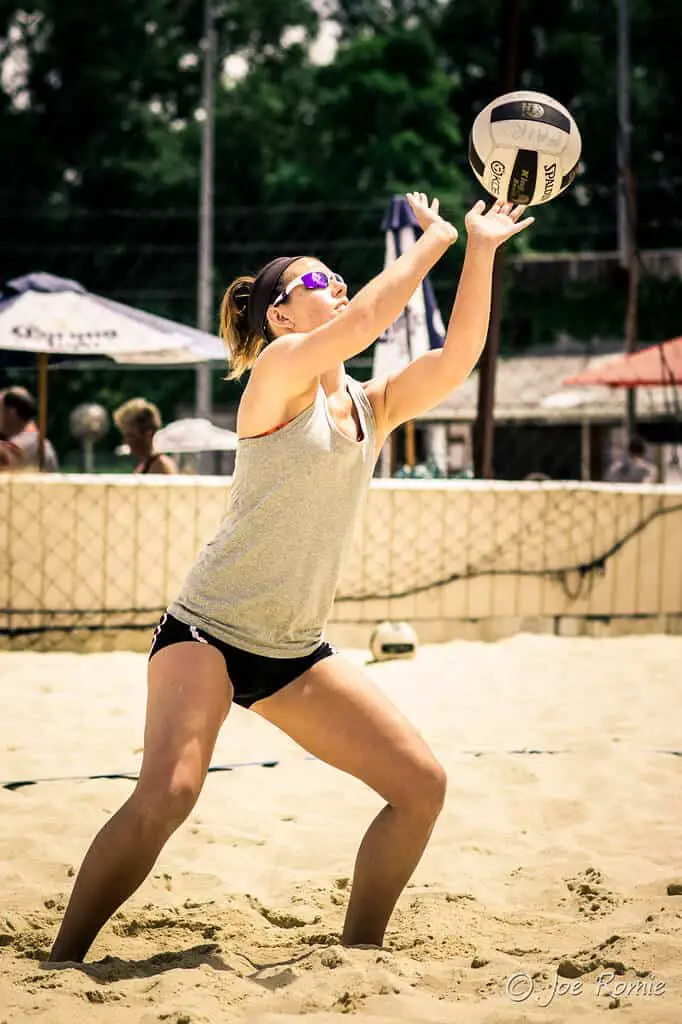
The last method sometimes taught (Although I’m not a huge fan of this move) is what is sometimes referred to as the tomahawk. The tomahawk is when you have your hands together in almost a praying position (variation to this is where you form a large fist using your two hands) and you use the edges of both your hands where you little finger is located to play the pass. The reason I am not a huge fan of this move is because you have such a small surface area it can be quite tricky to pull off when any real degree of accuracy.
With the above being said again when you play more volleyball you will likely develop your own twist on these techniques and you will find one that works for you. I know mine personally is a little unorthodox.
Summary
I appreciate that there is a lot of information on this page and that is why right at the start I stressed the importance of picking 2-3 points at one time and working on them until they become comfortable or second nature.
Now if you feel you are an intermediate player and you can’t quite get your passing up to that next level to compete with the best of them I suggest you click on this next article where I am going to go the pro secrets to passing and getting more touches/ dig.

